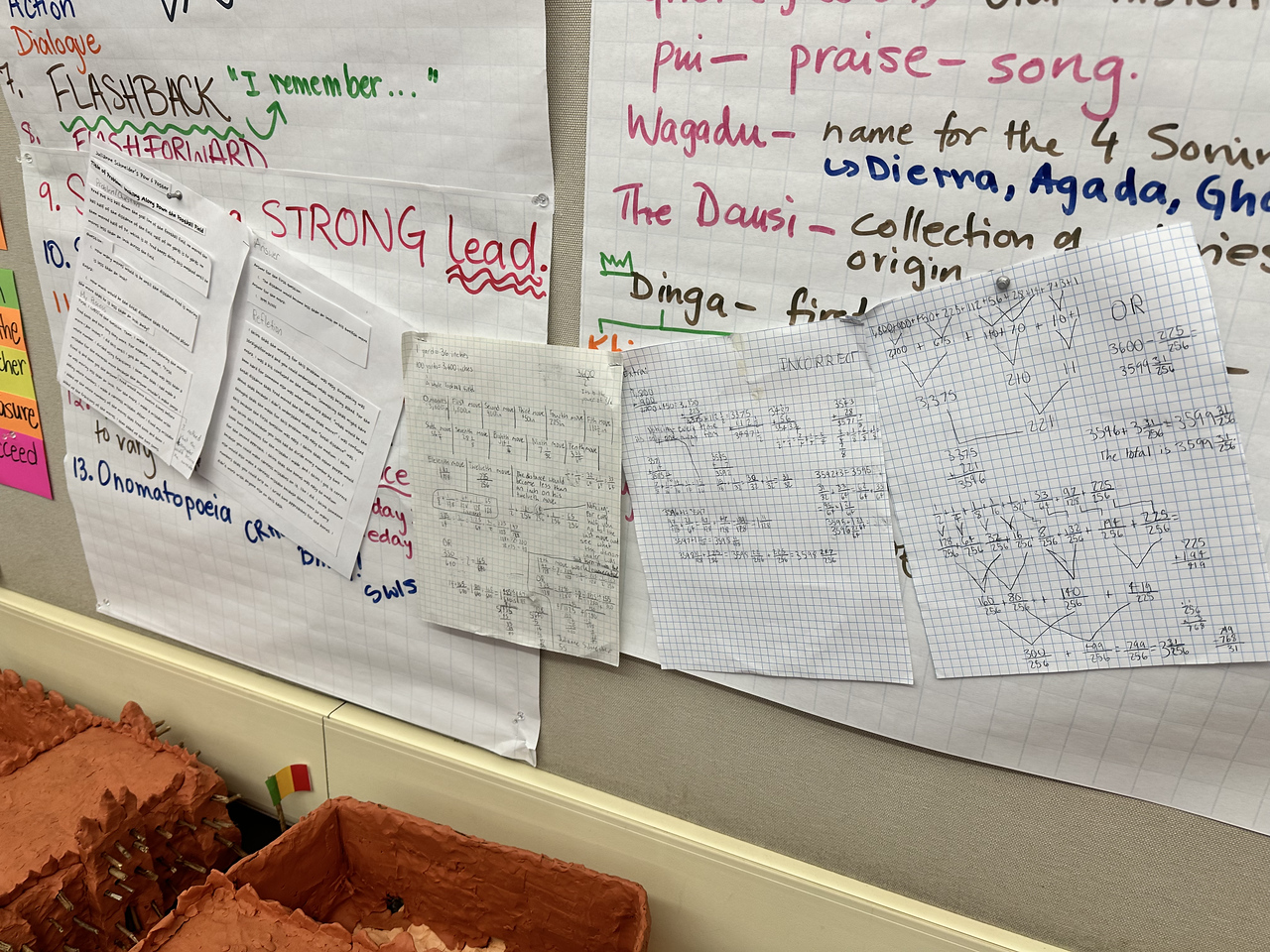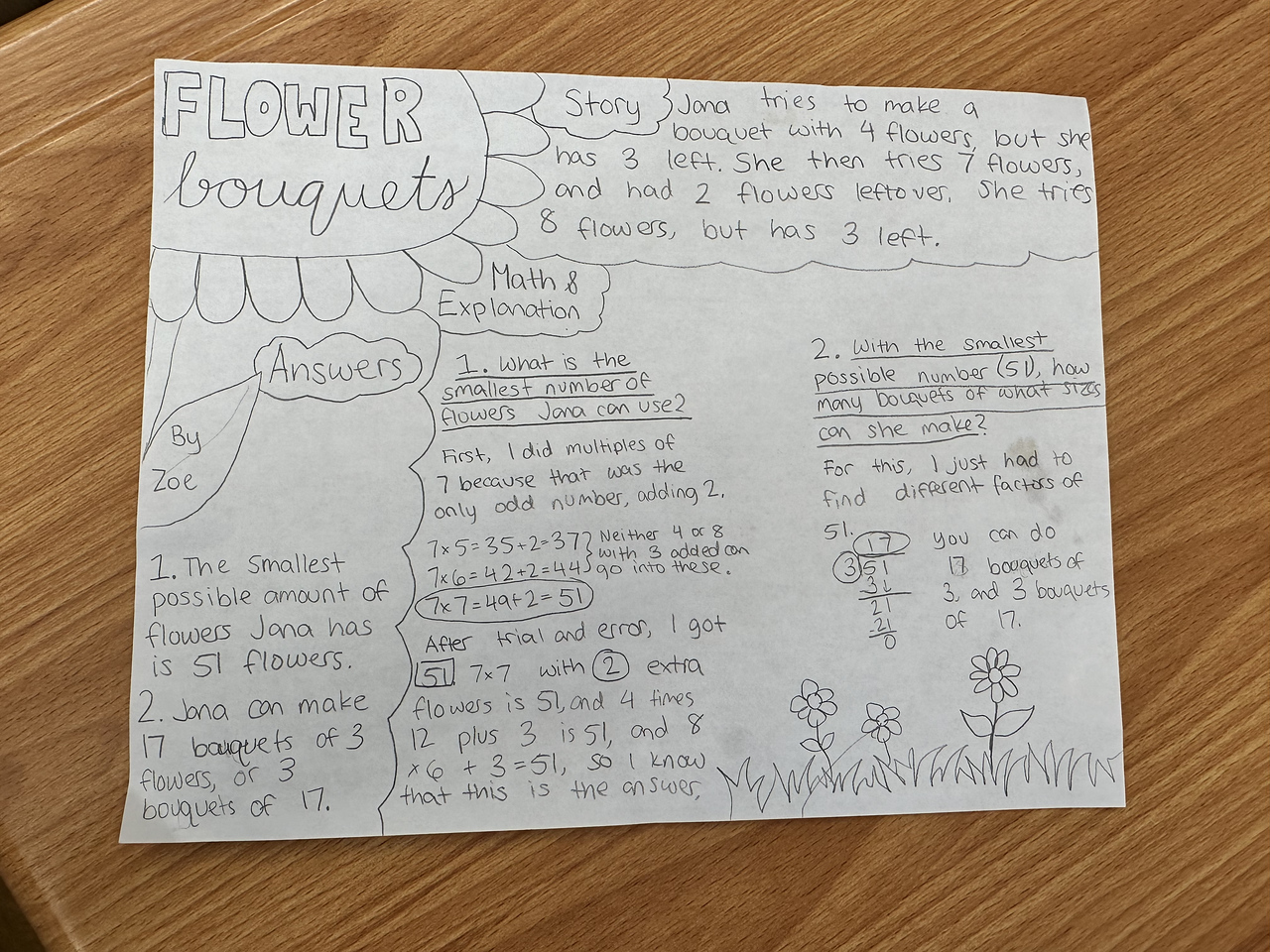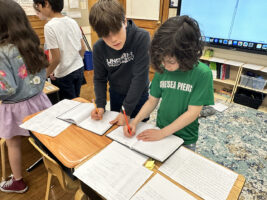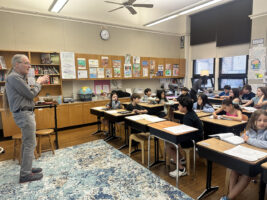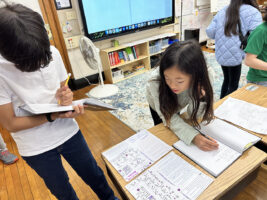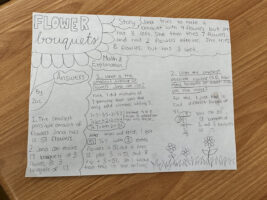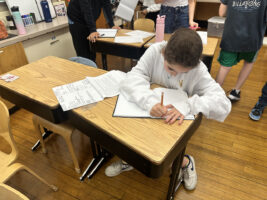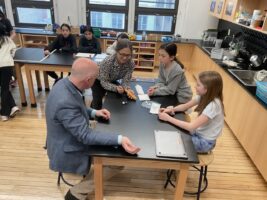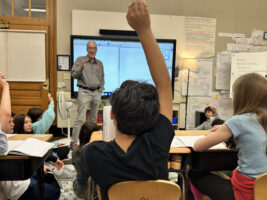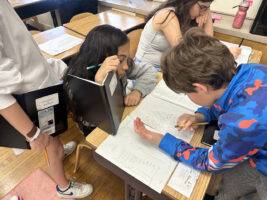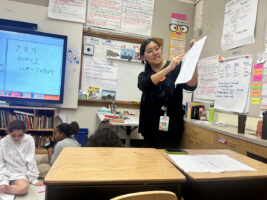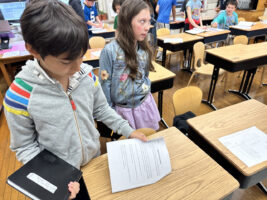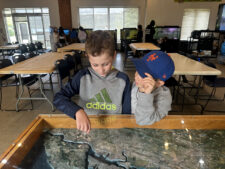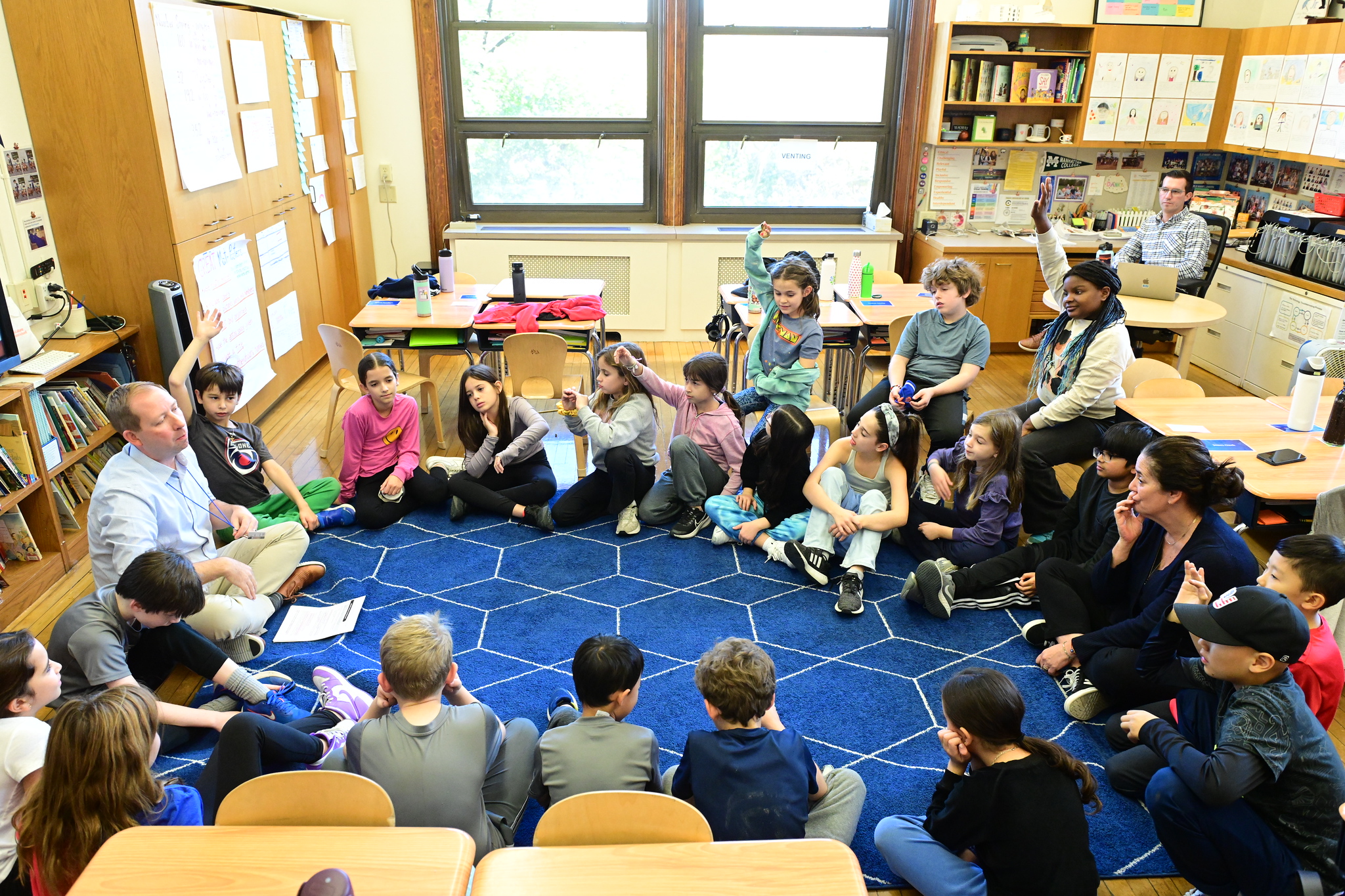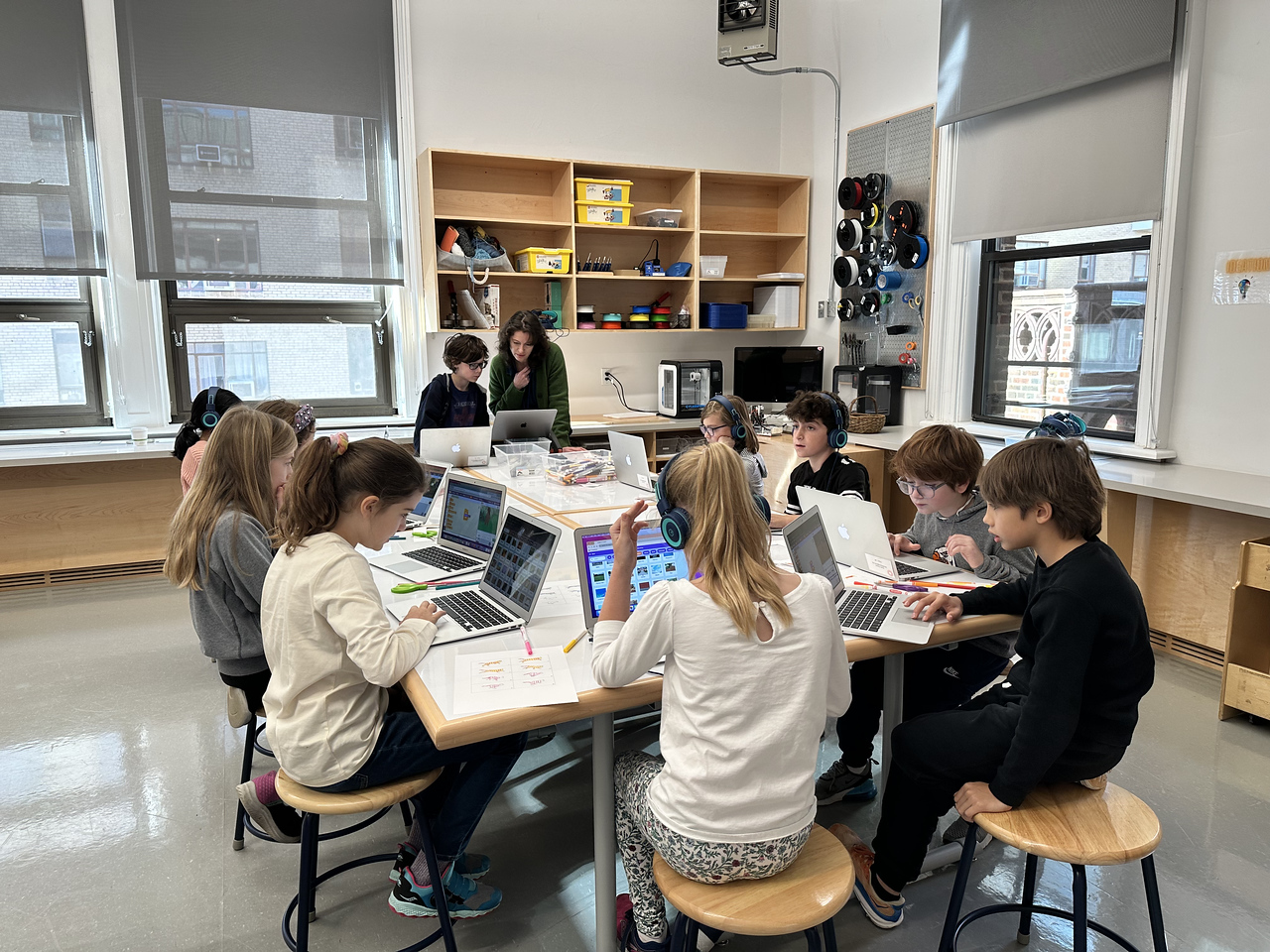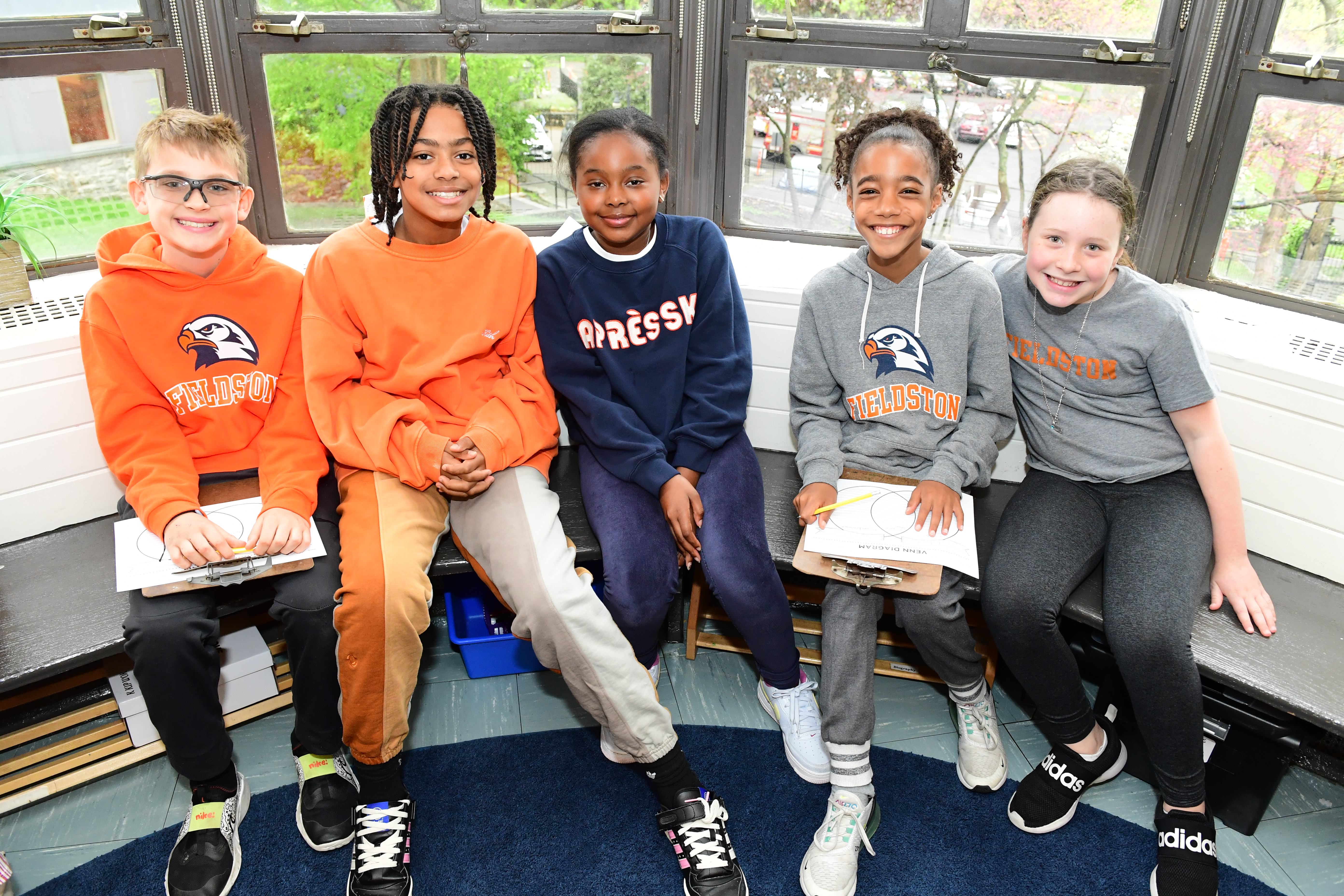At Ethical Culture Fieldston School, mathematics is a challenging journey of exploration, discovery, and empowerment. Our students engage in a learning experience that is both demanding and deeply rewarding, laying the foundation for a lifelong love of numbers and problem-solving.
This year, the Math Specialists at Ethical Culture — Jen Cooley, Becky Weintraub, Nina Liu, and Larry McMillan — challenged their students in ways that prioritize conceptual understanding and problem-solving over rote practices such as memorization and times tables. Students are encouraged to understand the “why” behind procedures, leading to a deeper comprehension of mathematical concepts.
One element of this approach is the 5th Grade “Problem of the Week.” McMillan gives his 5th Graders two challenging problems to solve at home each week. Students are tasked with solving one of the problems and exemplifying their strategies on a poster to share with their classmates. Differentiated learning caters to diverse styles, allowing students to choose the problem that resonates with them and fostering ownership and motivation. Believing that it’s important for students not to feel discouraged by difficulties, the math teachers design problems with multiple correct answers based on different approaches.
“It’s all about creating access and adjusting students’ mindset about math. We create multiple entry points to a problem,” says Cooley. “Students understand that there is more than one valid and efficient way to solve any problem.”
“Any sufficiently rich question can be extended,” adds McMillan. “A creative and thoughtful response to a rich question often leads students to a discovery about mathematics that begs for further investigation or suggests a way of confirming the solution.”
A recent Problem of the Week asked students the following question:

When considering the problem, students must comprehend it well enough to devise a strategy and own a solution well enough to explain it to others. When creating their posters, they must first annotate and paraphrase the question in their own words, explain their strategies for solving it, show their mathematical computations, and then identify where they had trouble, what they did correctly, and what they learned. Emphasizing the importance of differentiated learning, students can present their work on the posters in various ways — typed or handwritten, using tables or visuals, or choosing the poster’s orientation.
All students tackling this problem understood that they would eventually need to convert yards to inches. However, when and how they did so varied. Some students drew a football field, marking lines that halved the distance each time. Others created tables, first converting yards to inches and then dividing by two until their answer was less than one inch. Some worked in fractions, some in decimals, inviting comparisons of their advantages.
The variety in approaches is celebrated in the next step of the Problem of the Week process. Once their posters were complete, students participated in a “gallery walk,” silently reading each other’s posters and taking notes in their math journals to understand their peers’ work. They then gathered to share what they learned and discuss different strategies. This process allows students to take ownership of their work, practice explaining mathematical concepts, and appreciate multiple perspectives in problem-solving. This methodology extends beyond math, encouraging students to embrace creative solutions in other areas of their lives.
From Kindergarten onward, students engage in a journey that links abstract mathematical theories to real-world applications. Starting with basic concepts like shapes and numbers, they progressively build a strong foundation, recognizing math’s presence in everyday life and developing essential logical reasoning through activities focused on patterns. Math is seamlessly woven into their daily routines, whether in morning meetings, partner games, or guided explorations, ensuring that mathematical thinking becomes second nature.
As students progress into 2nd Grade, the emphasis shifts to building computational fluency while maintaining a focus on process over product. Small group settings encourage flexibility, accuracy, and efficiency in mathematical communication and problem-solving. In 3rd Grade, students may opt to join a Morning Math group that focuses on reasoning and problem-solving, exposing them to a broader range of mathematical challenges.
“From an early age, we deemphasize speed and instead try to develop fluency. Math is not an Olympic sport. Instead, we tell our students, ‘Your thinking and work matter and deserve recognition. Learning is messy, and it should be. Doing your best means embracing challenges and recognizing the value in where you get stuck,’” shares Weintraub.
This methodology continues as students advance through each grade and begin diving deeper into multiplication, division, factors, multiples, and properties of numbers. Real-world connections remain at the core of learning, with students applying mathematical concepts to analyze data, solve complex problems, and make informed decisions. Whether creating tables and graphs in tandem with Social Studies Workshop or exploring exponential growth and division strategies, students are constantly challenged to think critically and creatively.
This accessible and differentiated approach to teaching math also makes learning fun. Students are not deterred by difficulty and eagerly anticipate the next problem, looking for new ways to challenge themselves.
Students also have the opportunity to extend their math practice by joining the Math Club. McMillan invites any students looking for an added challenge to commit to Math Club, which invites them to explore mathematical concepts not typically covered in the regular curriculum. They investigate fascinating topics like fractal designs, Möbius strips, and probability. The latter is examined through the lens of fair and unfair games, culminating in designing games of chance, determining their probabilities, and presenting their games to the rest of the 5th Graders at the “Is it Fair? Fair!”. A club highlight is the rotational symmetry project, where students create and share intricate designs. This opportunity encourages students to commit to trying out these concepts in class, deepening their understanding and appreciation of math.
“5th Grade students have the skills and background knowledge to engage with a wider range of topics in mathematics than we can fit into math class,” says McMillan. “It is a lovely puzzle to determine if a particular group of students is better suited to investigate ciphers or applications of symmetry in art.”
At ECFS, we believe that every student is a mathematician in their own right. Through real-world investigations, collaborative problem-solving tasks, and a supportive learning environment, our teachers empower students to embrace challenges, think critically, and approach mathematics confidently and enthusiastically. Our math curriculum is not just about formulas and numbers; it’s about nurturing curious minds, fostering resilience, and preparing students for a future where mathematical literacy is key to success.
